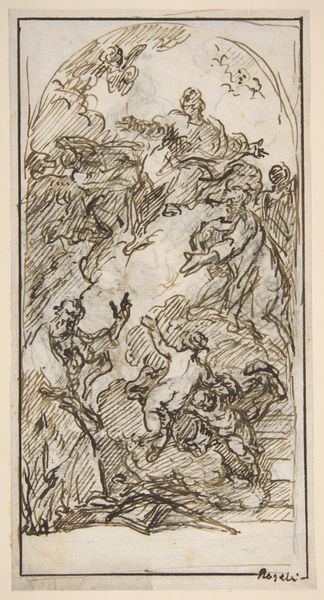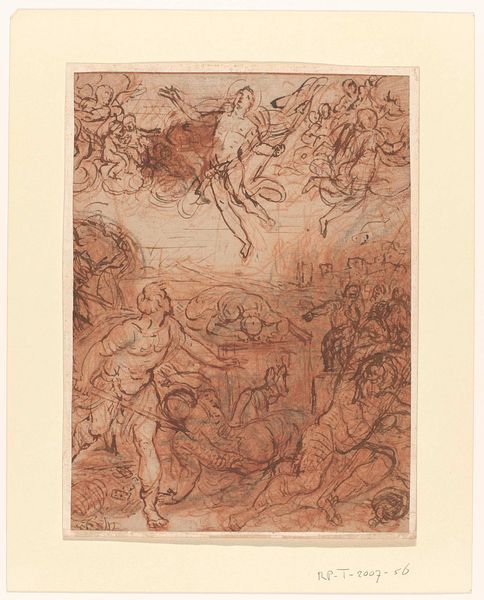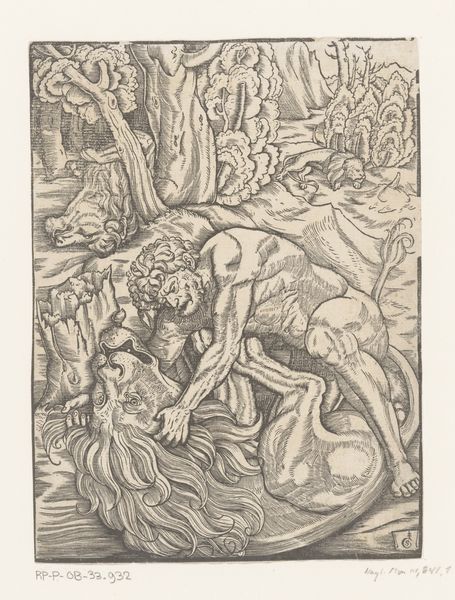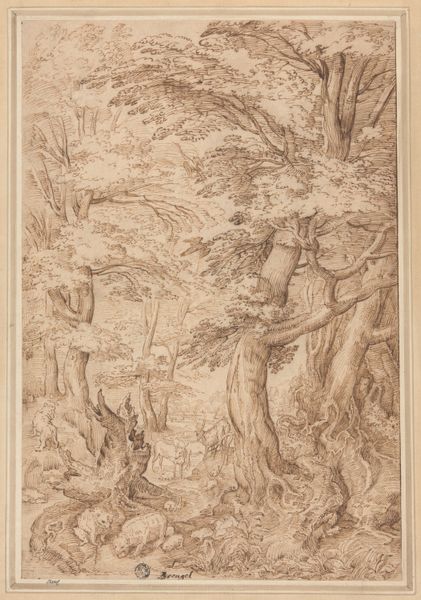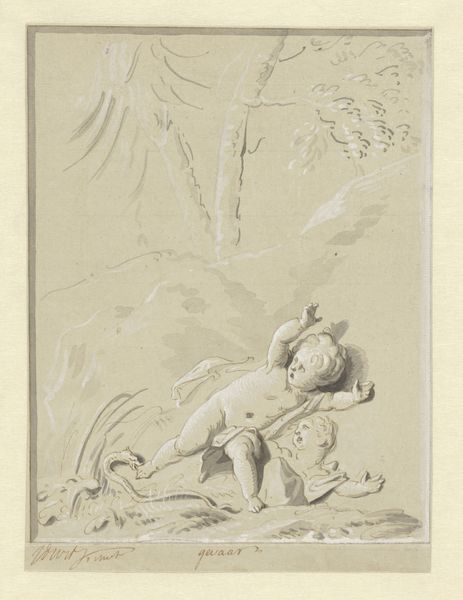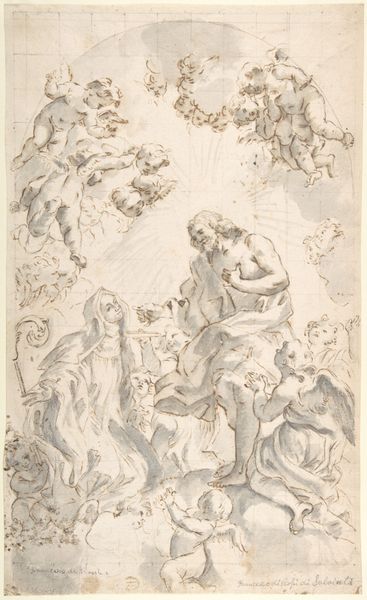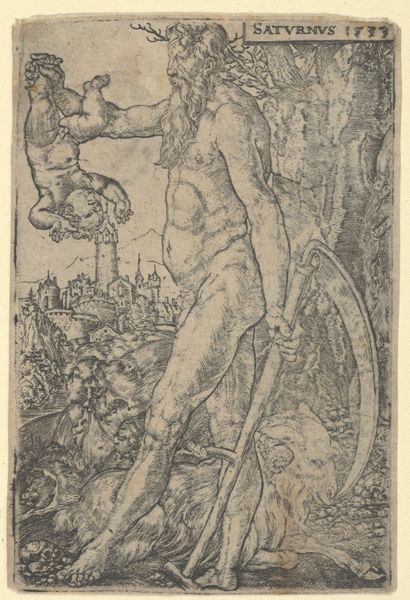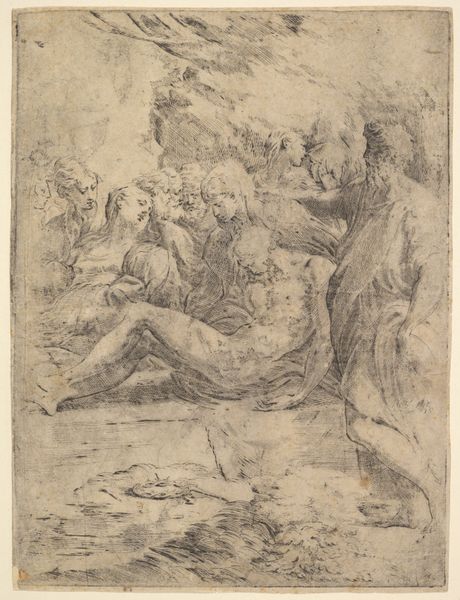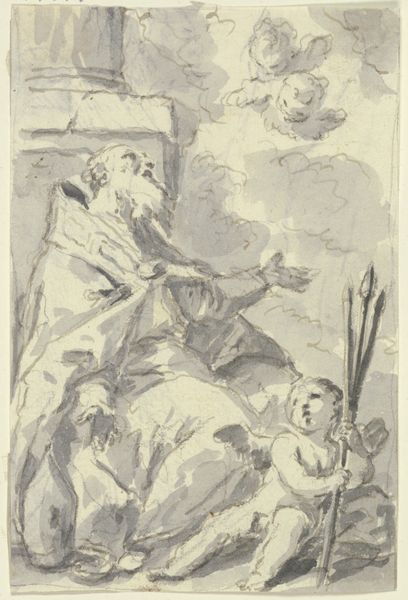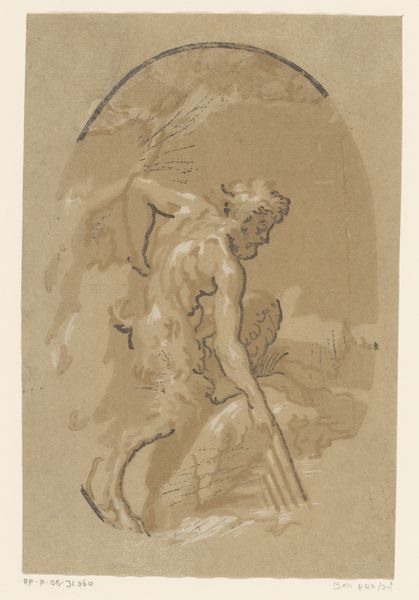
print, etching
# print
#
etching
#
landscape
#
etching
#
figuration
#
11_renaissance
#
genre-painting
#
italian-renaissance
#
nude
Dimensions: height 293 mm, width 200 mm
Copyright: Rijks Museum: Open Domain
Ugo da Carpi made this print, *Badende nimfen*, sometime in the early 16th century, using a woodcut technique. Rather than the more common approach of engraving lines onto a metal plate, woodcut involves carefully carving away areas to leave a raised design. The striking thing about this particular print is that it’s made using several blocks, each inked with a different tone. Carpi was one of the first artists to experiment with this process, known as chiaroscuro, meaning ‘light-dark’ in Italian. This allowed for a much more subtle range of shading than could be achieved with a single block. You can see how the careful layering of tones gives the figures a real sense of depth and volume, almost like a drawing. The level of skill required to align multiple blocks perfectly for each print was considerable, demanding precision and patience. In a way, this print bridges the gap between the unique artwork and the mass-produced image, reminding us that even in the age of mechanical reproduction, the hand of the artist remains crucial.
Comments
No comments
Be the first to comment and join the conversation on the ultimate creative platform.

